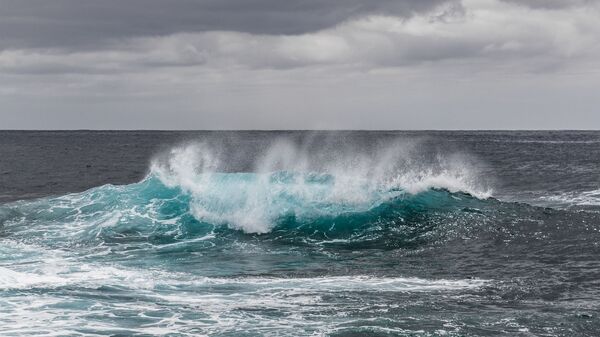Water was found on an exoplanet circling a distant star, leading astronomers to declare it the most potentially-habitable world yet discovered, The Guardian reported Wednesday, citing a report in Nature Astronomy.
Named K2-18b, the planet orbits the red dwarf K2-18 in the constellation of Leo. Originally discovered in 2015, it orbits its star in just 33 days. The planet is located in the star’s ‘Goldilocks zone,’ indicating that its surface is neither too hot or too cold for liquid water.
And, according to Nature Astronomy, there is up to 50 percent of water in the planet’s atmosphere - although that estimation is extremely rough, ranging from 0.01 percent.
The discovery was made by a group of astronomers from the University College of London (UCL) using the NASA Hubble telescope, using two Earth years of observations. The astronomers noted that certain light wavelengths dropped as the planet occluded its star, returning to normal as it moved on. Those missing wavelengths are ordinarily absorbed by water vapor, The Guardian explained.
So we found water vapor in the atmosphere of a 9 Earth-mass exoplanet in the habitable zone! After observing 8 transits of K2-18b with HST/WFC3, we (led by Björn Benneke) find a significant water feature:https://t.co/oASKE4x2qq pic.twitter.com/QJukX1ncRo
— Josh Lothringer (@JDLothringer) September 11, 2019
“To our great surprise we saw a pretty strong signature of water vapour,” said Giovanna Tinetti, a member of the UCL team. “It means first of all that there’s an atmosphere, and second that it contains a significant amount of water.”
If there is water and temperatures are similar to Earth, there is a high chance the planet could harbor carbon-based life. Currently, water remains a necessary condition for the existence of life according to exobiologists, until a completely different form of life is identified.
“This is the first potentially habitable planet where the temperature is right and where we now know there is water,” said Angelos Tsiaras, a UCL astronomer. “It’s the best candidate for habitability right now.”
The planet, however, has a gravity eight times as strong as Earth’s, which means that an average man on its surface would weigh about half a ton.
“It’s maybe not quite your vacation destination just yet,” quipped Ingo Waldmann, a researcher on the team.
The astronomers cannot be sure how much of the surface of the planet is covered with water, indicating the need for further observations.
The report nonetheless suggests that there could be more planets like this and the discovery will make it easier to find them. That work is expected to be done with NASA’s upcoming James Webb space telescope, scheduled for launch in 2021 and the European Space Agency’s Ariel mission in 2028.

